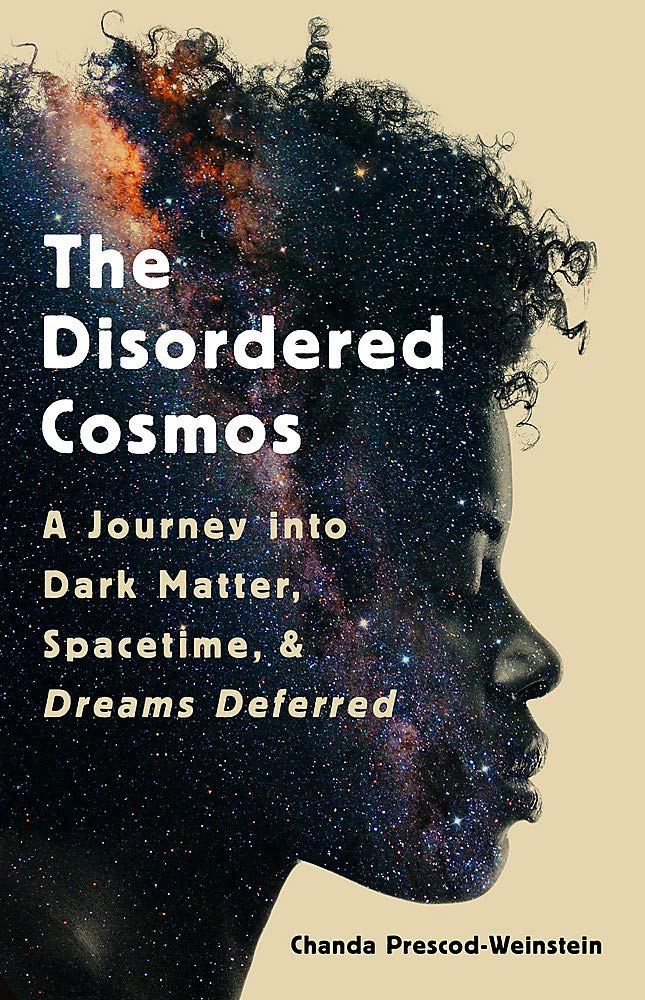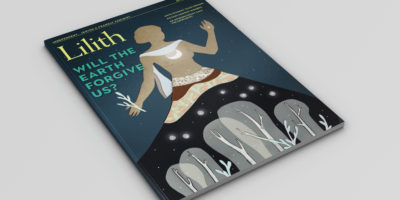
From the Cosmos to the Patriarchy
As a Black Jewish person who was socially assigned female at birth, I wasn’t supposed to become a theoretical physicist. Jewish women are familiar with this phenomenon, after having been locked out of the rabbinate for centuries. While theoretical physicists, like Rabbis, get to think about exciting questions regarding the origins of spacetime, gatekeeping impacts who gets to be in the room, calculating. Here is how I’ve come to better understand the way patriarchy has shaped my life.
Though I’ve read about patriarchy in books, it is my own experience as a Black woman and an agender person that allows me particular insight into how the total system of patriarchy works. I tend to think of why in terms of my favorite popular science fiction universe, Star Trek.
In both the Voyager and Enterprise series, there are episodes where, due to quantum effects, the ship or some member of it ends up “out of phase” with the rest of spacetime. In the Enterprise episode “Vanishing Point,” Ensign Hoshi Sato (the ship’s communications officer) has an accident with Star Trek’s iconic teleportation device, the transporter. Enterprise is set soon after humans first develop the capacity to travel at light speed, so it is early in their use of the transporter technology. Without giving away too much of the episode, Sato finds herself in what must be a personal hell for someone in charge of trying to communicate with everyone on the ship but unable to after she gets stuck in a quantum phase that is out of sync with the rest of the ship.
“Vanishing Point” is a difficult episode to watch, partly because it’s a reminder of how few opportunities Korean-American actress Linda Park got to flex her skills on the show, but also because it is a kind of torture imaginable to most Black women and gender minorities— to be completely invisible and never heard. But what’s also interesting about the episode is that by being out of phase, Sato gets holistic insights into the operation of the ship, and the lives of its crew, that no one else on the ship has ever had. She alone gets to see what Captain Jonathan Archer is like when he is alone with his dog, Porthos. Sato has a unique stand- point on the ship—and I choose this word very carefully. One of the major contributions that feminist theory has made to our understanding of science is advancing standpoint theory—the idea that someone’s particular social position can give unique insights into phenomena, insights others with different social positions would miss.
This is what my journey into understanding what it means to be an agender woman has been like. It has forced me to look at patriarchy from angles I never would have considered if I had maintained my belief that I fit neatly into the gender binary rather than recognizing that I am what Ralph De La Rosa calls a “gender dropout.” Maintaining a traditional relationship to the gender binary required accepting, uncritically, what I had been told by society about who I was and who I could be. This too is a hallmark of patriarchy, and it is one that even cisgender women should be able to understand. Patriarchy says that people have to be certain things. It says that we all have to accept our social gender/sex assignment, based on our birth genitalia or the genitalia that are selected for the intersex among us at birth. It says that boys must grow up into domineering men; girls must grow up into refined ladies.
As Zakiyyah Iman Jackson puts it in Becoming Human: Matter and Meaning in an Antiblack World, “black womanhood is imagined to be a gender apart [and] also an ‘other’ sex.” Indeed, one of the challenges of Euro-American dis- courses about trans, and more generally gendered, identities is that they are centered in traditionally Western framings of what constitutes gender, sex, and the numbers of genders and sexes out there. The Euro-American discourse can be both incomplete and a hindrance. Whiteness has an intimate role in how people like me are able to understand our gender and sex identities. It’s important to recognize too, as Marquis Bey points out in Anarcho-Blackness: Notes Toward a Black Anarchism, “The gender binary is part and parcel of capitalism’s division and devaluation of gendered labor.”
When I came out as agender, it was immediately obvious to me that my experience with “agender” was different from what a lot of trans people go through, and for this reason I’ve always felt a bit hesitant about my inclusion under the “trans” umbrella, even though I guess I live somewhere out there, on the outskirts. I had a lot of questions when I came out, and I continue to have a lot of questions now. There seem to be all of these rules about being trans or being on the periphery. If you feel fine with the so-called gendered pronouns that people use for you, are you really agender? If I continue to be femme presenting, doesn’t that mean I have a gender? I trust that other people have strong gendered identifications, but I don’t understand it. I believe my understanding of how to articulate my identity will change with time, because our understanding of gender and sex is always in flux. But for now: I am genderless yet in my everyday life I am gendered by others. There is a distance between what people believe my gender is and how I feel on the inside. My subconscious gender experience does not align with my physical and social sex experience.
At the same time, I distinctly remember asking myself in my early twenties what exactly made me a woman. These questions were prompted by discourses about sexism in science that typically focused on white women. For a long time, I thought my only discomfort with them was because they ignored race. But I was feeling a discomfort with a conversation about patriarchy that only acknowledges women and usually means cissex women. The very existence of trans women and men, women and men who have a complex gender identity, and nonbinary people, is regularly erased entirely from the discussion of gender, sex, and science. When trans women, trans men, and those who are somehow outside of the binary do become part of the discourse, it is usually in the most superficial ways. All trans people are often classed together as a group, even though trans women and men tend to have very different experiences with medicalization, socialization, transition, public gendering, and violence. Because these experiences play such a major role in the lives of trans people, we must integrate them into our understanding of how patriarchy affects science and particularly harms scientists who aren’t cis men.
Dr. Chanda Prescod-Weinstein is an Assistant Professor of Physics and core faculty in Women’s and Gender Studies at the University of New Hampshire.
This article is adapted from The Disordered Cosmos: A Journey into Dark Matter, Spacetime, and Dreams Deferred by Chanda Prescod-Weinstein. Copyright © 2021. Available from Bold Type Books, an imprint of Perseus Books, LLC, a sub- sidiary of Hachette Book Group, Inc.





